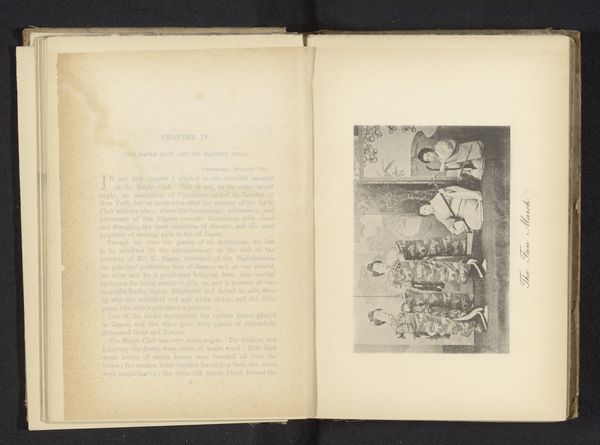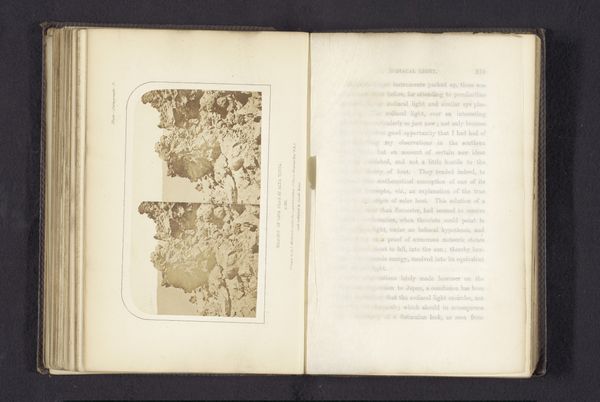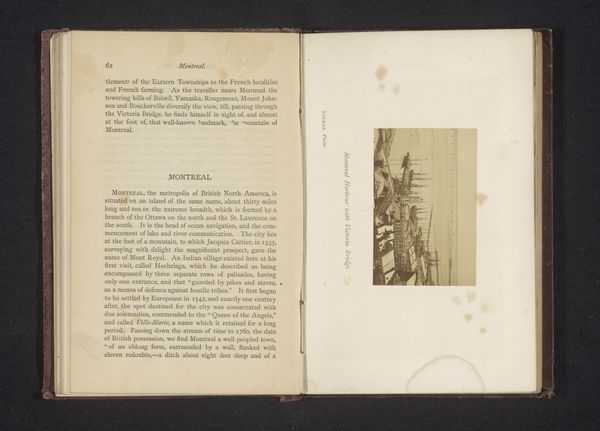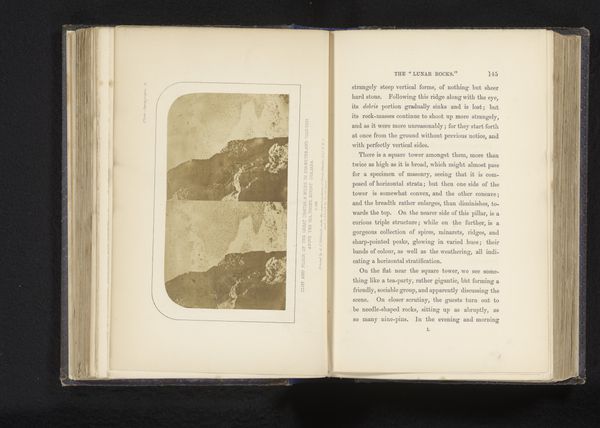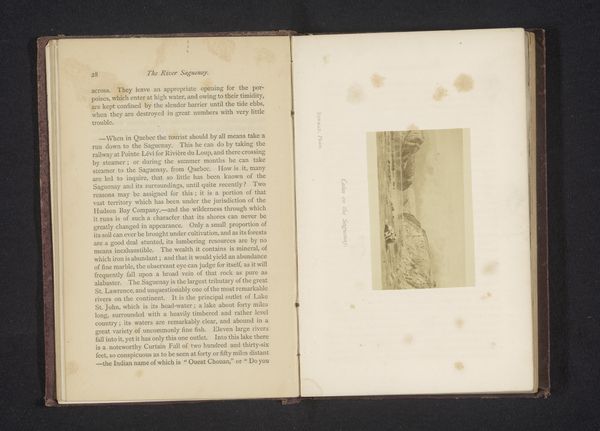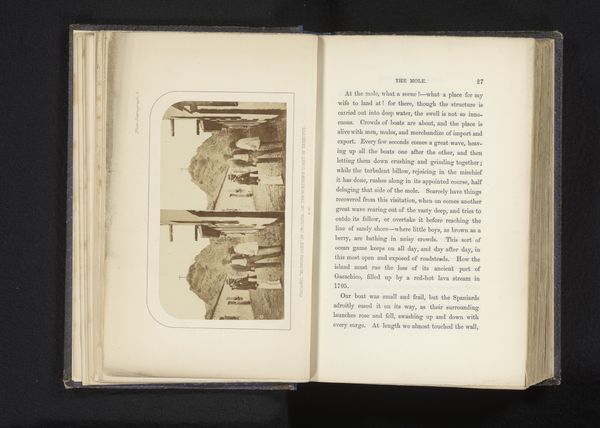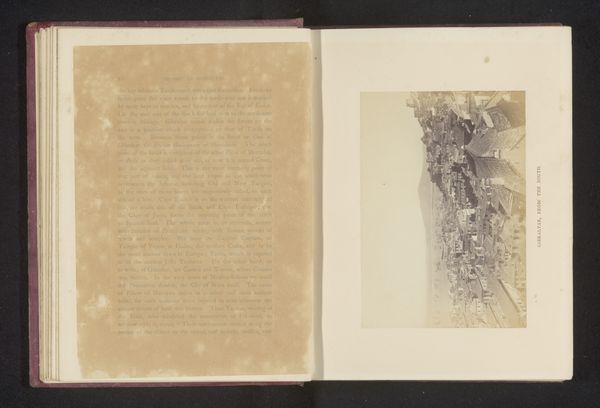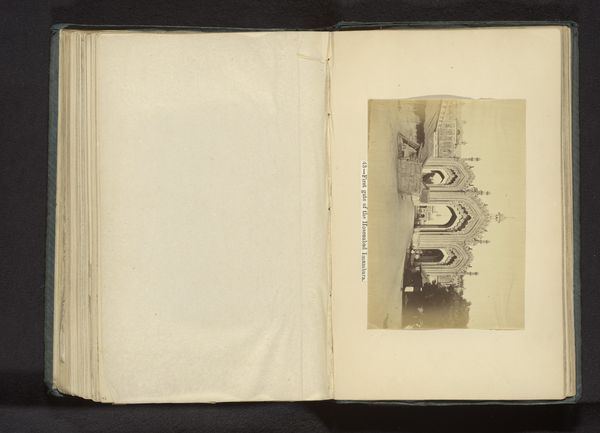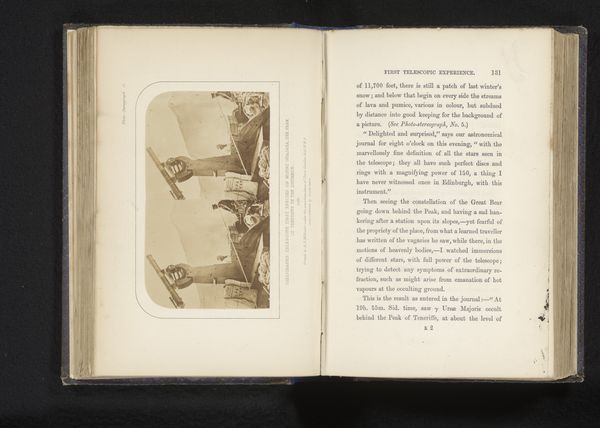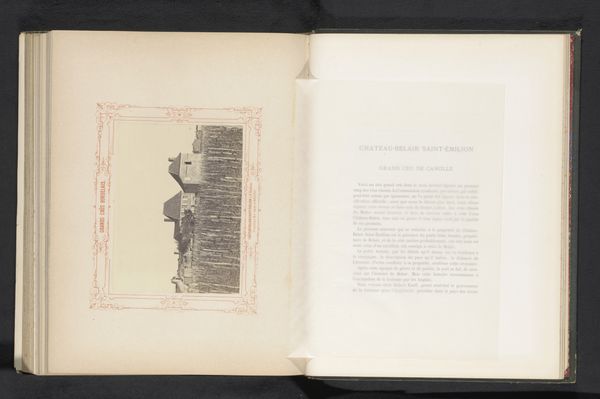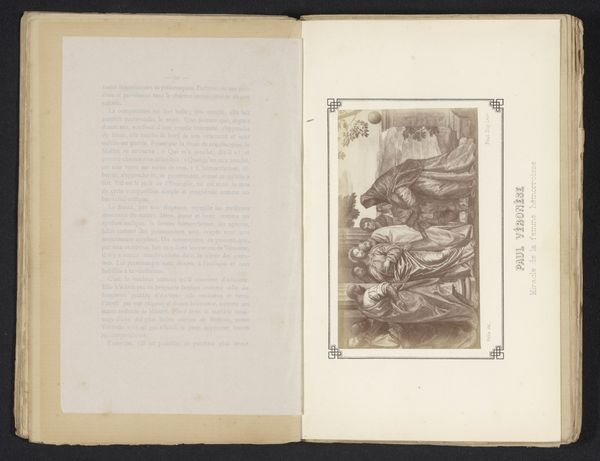
Second mate of yacht observing radiation thermometers on Mount Guajara before 1886
0:00
0:00
Dimensions: height 69 mm, width 123 mm
Copyright: Rijks Museum: Open Domain
Curator: What a captivating image! This albumen print, created before 1886 by Charles Piazzi Smyth, is titled "Second Mate of Yacht Observing Radiation Thermometers on Mount Guajara." Editor: My first impression is one of scientific precision meeting romantic isolation. The subdued tones and the almost uncanny stillness lend the scene an air of both discovery and solitude. Curator: Exactly! Smyth was a pioneer in using photography for scientific documentation, especially in astronomy. Here, he captures his assistant conducting experiments atop Mount Guajara in Tenerife. Consider how rare these expeditions were. Access was defined by class and nationality, positioning the second mate in a unique, if complicated, relation to labour and progress. Editor: The composition really directs the eye, doesn't it? The repetition of the assistant and the instruments emphasizes the meticulous nature of the observations. The geometric forms of the thermometers contrast sharply with the rugged, organic shapes of the mountain rocks. It’s almost like nature itself is being measured and contained. Curator: I agree. But beyond the aesthetic appeal, think about the context: Smyth was investigating infrared radiation from the sun to address what he viewed as inaccuracies from ground-level observation in England. Editor: Ah, so it’s a narrative about challenging established perspectives and embracing a higher vantage point – literally and figuratively? This mountain, serving as both subject and support for his study, offers an almost transcendental setting to confront accepted norms in understanding astronomy. Curator: Precisely! Moreover, the presence of the second mate as an instrument in these observations also begs critical attention as to whom makes scientific discovery possible. Editor: Thinking about the stark contrast of the instruments with the environment, one wonders if he found what he sought, or perhaps discovered something else about the relationship between nature and the tools we use to understand it. Curator: An important reminder that observation and instrumentation are embedded in a colonial history that cannot be unseen. Editor: An unexpected narrative layered within a seemingly straightforward scientific image.
Comments
No comments
Be the first to comment and join the conversation on the ultimate creative platform.
